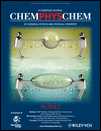
CHEMPHYSCHEM
Scope & Guideline
Unveiling the Complex Interactions of Matter and Energy
Introduction
Aims and Scopes
- Theoretical and Computational Chemistry:
A significant portion of the journal's articles focuses on theoretical and computational methods, including density functional theory (DFT), molecular dynamics simulations, and quantum chemical approaches to study molecular interactions, reaction mechanisms, and material properties. - Materials Science and Nanotechnology:
The journal frequently publishes research on the synthesis and characterization of novel materials, including nanostructured materials, metal-organic frameworks, and hybrid systems, often emphasizing their applications in energy storage, catalysis, and electronic devices. - Electrochemistry and Energy Storage:
Research in electrochemistry, particularly related to batteries, fuel cells, and supercapacitors, is a core area. Studies often explore mechanisms of charge transfer, electrocatalysis, and the development of new electrode materials. - Interfacial Chemistry and Surface Science:
The journal includes work on interfacial phenomena, including adsorption processes, surface modifications, and the role of surface chemistry in catalysis and material performance. - Biophysical Chemistry:
Research that intersects with biological systems, including studies on biomolecular interactions, enzyme mechanisms, and the role of chemical processes in biological contexts, is also a prominent area.
Trending and Emerging
- Sustainable and Green Chemistry:
There is a noticeable increase in research focused on sustainable practices, including green chemistry approaches, renewable energy technologies, and environmentally friendly materials. This reflects the global push towards sustainability. - Machine Learning and Artificial Intelligence in Chemistry:
The integration of machine learning and AI techniques in chemical research is gaining traction. Studies that utilize these tools for predictive modeling, optimization of reaction conditions, or materials discovery are increasingly common. - Advanced Materials for Energy Applications:
Research on advanced materials specifically designed for energy applications, such as batteries, fuel cells, and solar cells, is on the rise. This includes investigations into new materials, their synthesis, and their performance in energy conversion and storage systems. - Nanostructured and Hybrid Systems:
The trend towards exploring nanostructured and hybrid systems is prominent, with many studies focusing on their unique properties and potential applications in catalysis, sensing, and electronics. - Interdisciplinary Approaches to Chemical Research:
There is a growing trend towards interdisciplinary research that combines insights from chemistry, physics, materials science, and biology. This is evident in studies that address complex problems through collaborative approaches.
Declining or Waning
- Classical Organic Synthesis:
There seems to be a decreasing trend in articles focused solely on classical organic synthesis methods. As the field evolves, there is a greater emphasis on novel synthetic methodologies that incorporate computational insights and advanced materials. - Traditional Catalysis without Novel Materials:
Research centered on traditional catalytic processes without exploring new catalysts or materials is less frequently represented. The focus has shifted towards innovative approaches that involve nanomaterials, single-atom catalysts, and hybrid systems. - Basic Spectroscopic Studies:
While spectroscopic techniques remain important, basic studies that do not connect to broader applications or interdisciplinary research appear to be decreasing. There is now more emphasis on integrating spectroscopy with other methodologies to provide comprehensive insights.
Similar Journals
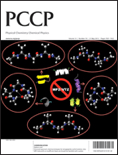
PHYSICAL CHEMISTRY CHEMICAL PHYSICS
Empowering Researchers to Shape the Future of Chemistry and PhysicsPhysical Chemistry Chemical Physics is a premier interdisciplinary journal published by the Royal Society of Chemistry, dedicated to advancing the fields of physical chemistry and chemical physics. With an impressive impact factor and categorized in the Q2 quartiles for both Physical and Theoretical Chemistry and Physics and Astronomy, this journal serves as a vital platform for the dissemination of high-quality research findings from 1999 through 2024. Based in the United Kingdom, the journal is committed to providing open access to its articles, enhancing the visibility and accessibility of research to a global audience. Researchers, professionals, and students alike are encouraged to contribute to this esteemed journal, ensuring impactful discussions and significant advancements in the understanding of chemical and physical phenomena. With strong Scopus rankings underscoring its relevance, Physical Chemistry Chemical Physics stands out as an essential resource for specialists striving to innovate and excel within these dynamic fields.
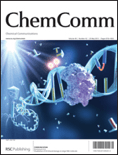
CHEMICAL COMMUNICATIONS
Unveiling the complexities of chemical interactions.Chemical Communications, published by the esteemed Royal Society of Chemistry, is a prominent journal within the field of chemical science, focusing on the dissemination of cutting-edge research in a variety of sub-disciplines including catalysis, materials chemistry, and electronic materials. Operating without an open access model, this journal provides critical insights from contributors around the globe, enhancing our understanding of complex chemical interactions and innovative applications. Ranked in the top quartile for several categories such as Ceramics and Composites, and Metals and Alloys, Chemical Communications boasts impressive Scopus rankings, securing strong positions across multiple fields and showcasing its influence within the scientific community. The journal is committed to advancing knowledge and fostering collaboration among researchers, professionals, and students, making it an invaluable resource for those looking to stay abreast of the latest advancements in chemistry and materials science. With a publication history dating back to 1965 and continuing into 2024, its rich archive serves as a vital repository of chemical research and development.
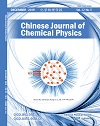
CHINESE JOURNAL OF CHEMICAL PHYSICS
Bridging Theory and Practice in Chemical PhysicsChinese Journal of Chemical Physics, published by the Chinese Physical Society, serves as a pivotal platform for advancing the field of chemical physics, encompassing groundbreaking research and innovative methodologies since its inception in 2000. With an ISSN of 1674-0068 and E-ISSN of 2327-2244, the journal has established itself within the academic community, reflected in its 2023 classification as Q3 in Physical and Theoretical Chemistry and a Scopus rank of #142 out of 189, representing the 25th percentile in this competitive field. Although it does not currently operate as an open-access publication, its commitment to disseminating pivotal scientific research continues to attract scholars and professionals alike. The journal aims to bridge the gap between theoretical principles and practical applications in chemical physics, thereby fostering collaboration and innovation. By contributing significantly to the discourse in this dynamic domain, the Chinese Journal of Chemical Physics remains an essential resource for researchers, professionals, and students eager to stay abreast of contemporary developments.
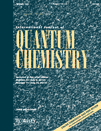
INTERNATIONAL JOURNAL OF QUANTUM CHEMISTRY
Transforming the Landscape of Quantum ChemistryInternational Journal of Quantum Chemistry is a distinguished scholarly publication that has been at the forefront of advancements in the realm of quantum chemistry since its inception in 1967. Published by Wiley in the United States, this journal holds a significant place in the academic community, currently indexed in the Q3 quartile across various categories including Atomic and Molecular Physics, Condensed Matter Physics, and Physical and Theoretical Chemistry. With an ISSN of 0020-7608 and an E-ISSN of 1097-461X, the journal offers a platform for researchers and professionals to disseminate cutting-edge findings in quantum chemical research. While it operates under a traditional subscription model, the journal remains committed to enhancing the visibility of its contributions within the scientific community. With a convergence of research that spans from 1967 to 2024, the International Journal of Quantum Chemistry is pivotal for anyone looking to advance their understanding and application of quantum principles in chemistry, providing valuable insights into the microscopic interactions that govern matter and its properties.

ACTA CHIMICA SINICA
Unveiling the Future of Chemistry through Rigorous ResearchACTA CHIMICA SINICA, published by SCIENCE PRESS, is a distinguished peer-reviewed journal in the realm of Chemistry, specifically focusing on general and miscellaneous chemistry fields. Since its inception in 1982, the journal has consistently contributed to the advancement of chemical research in China and beyond, maintaining a reputable standing within the academic community, evidenced by its 2023 Scopus ranking of #197 out of 408 in its category. With a current impact factor placing it in the Q3 quartile, ACTA CHIMICA SINICA aims to disseminate innovative research findings, covering a wide spectrum of topics within the discipline. Although it is not an open-access journal, it offers various access options through institutional subscriptions, ensuring that its high-quality content is available to a broad audience. Researchers, professionals, and students alike will find this journal a vital resource for keeping abreast of developments in the field and for contributing their own findings to an engaged scientific community.

Electrochemical Science Advances
Connecting Ideas, Inspiring Innovations in ElectrochemistryElectrochemical Science Advances, published by WILEY, is an esteemed Open Access journal that has been making significant contributions to the field of electrochemistry since its inception in 2021. With an ISSN of 2698-5977, this journal serves as a vital platform for researchers and practitioners looking to disseminate their findings on a diverse range of topics within the electrochemical sciences and related areas. The journal has achieved commendable rankings in the Scopus database, placing it in the 2nd quartile in Chemistry (miscellaneous) and the 3rd quartile in Electrochemistry, highlighting its relevance and growing influence in the academic community. As it converges from 2021 to 2024, Electrochemical Science Advances aims to foster collaboration and innovation, offering a vital resource for students, professionals, and researchers dedicated to advancing knowledge and technology in electrochemistry. Access to this cutting-edge research is straightforward, allowing for a comprehensive engagement with the latest advances in the field.
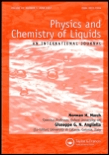
PHYSICS AND CHEMISTRY OF LIQUIDS
Pioneering Research in the World of LiquidsPHYSICS AND CHEMISTRY OF LIQUIDS is a distinguished academic journal dedicated to the exploration and advancement of liquid-state scientific research within the fields of physics and chemistry. Published by Taylor & Francis Ltd, this esteemed journal features contributions that delve into various aspects of condensed matter physics, materials chemistry, and characteristics of electronic, optical, and magnetic materials. With an ISSN of 0031-9104 and an E-ISSN of 1029-0451, it has been disseminating valuable knowledge since its inception in 1968. The journal’s commitment to academic rigor is reflected in its current Q3 rankings across multiple categories, including condensed matter physics and physical chemistry. Although not open access, the journal remains a crucial resource for researchers, professionals, and students seeking to stay at the forefront of liquid research advancements. Its publications contribute significantly to the understanding of the interactions and behaviors of liquid materials, making it an indispensable asset in both academic and industrial contexts.

Journal of Physical Chemistry Letters
Advancing the Frontiers of ChemistryThe Journal of Physical Chemistry Letters, published by the American Chemical Society, is a premier journal in the fields of Physical and Theoretical Chemistry, Materials Science, and Nanoscience and Nanotechnology. Since its inception in 2010, this journal has established itself as a significant platform for rapid publications of cutting-edge research that bridges various branches of chemistry, providing a critical avenue for advancing knowledge in these dynamic fields. With an impressive impact factor and a consistent ranking in the top quartile (Q1) of its categories, the journal ranks 25th out of 189 in Physical and Theoretical Chemistry and 79th out of 463 in General Materials Science according to Scopus metrics. Although it currently does not operate under an open access model, it remains an essential resource for academics seeking to disseminate their findings to a global audience. Researchers, professionals, and students alike will find invaluable insights and contributions that push the boundaries of scientific inquiry within these disciplines.
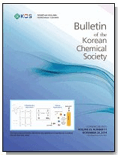
BULLETIN OF THE KOREAN CHEMICAL SOCIETY
Bridging foundational and emerging topics in chemistry.BULLETIN OF THE KOREAN CHEMICAL SOCIETY, published by WILEY-V C H VERLAG GMBH, is a prominent journal in the field of chemistry, with a specific emphasis on miscellaneous chemical research. With an ISSN of 0253-2964 and E-ISSN 1229-5949, this journal serves as a pivotal platform for researchers, professionals, and students who are eager to showcase innovative studies that address both foundational and emerging topics in the discipline. Boasting a commendable Q2 ranking in the 2023 chemistry quartiles, the journal ranks within the top 50th percentile in Scopus, reflecting its commitment to high-quality scientific discourse. The content published within its pages from 1996 to 2024 covers a vast array of subjects, ensuring a multidisciplinary approach to chemical research. The journal’s impact in the academic community is underscored by its accessibility to a global audience, making it an essential resource for those wishing to stay at the forefront of chemical advancements.
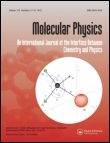
MOLECULAR PHYSICS
Fostering collaboration in cutting-edge molecular research.MOLECULAR PHYSICS, published by Taylor & Francis Ltd, is a distinguished international journal that has been advancing the fields of biophysics, condensed matter physics, molecular biology, and physical and theoretical chemistry since its inception in 1958. With an ISSN of 0026-8976 and an E-ISSN of 1362-3028, the journal provides a rich platform for the dissemination of high-quality research, evidenced by its Q3 ranking in several domains including both biophysics and condensed matter physics as of 2023. Although the journal operates on a traditional subscription model rather than an Open Access basis, its rigorous selection process ensures the publication of relevant and impactful articles. The journal's continued convergence of research until 2024 underlines its ongoing significance and adaptability in an ever-evolving scientific landscape. For researchers, professionals, and students alike, MOLECULAR PHYSICS serves as an essential resource for keeping abreast of the latest developments, fostering collaboration, and inspiring future advancements in molecular theory and applications.